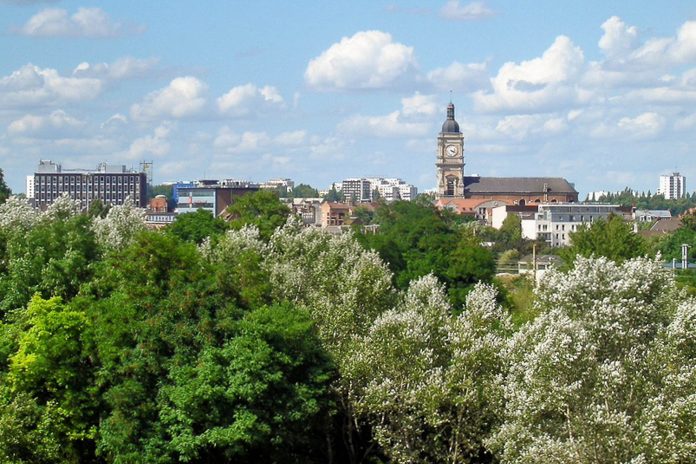Einst eines von Frankreichs bedeutendsten Zentren für den Steinkohle-Abbau liegt Lens heute wirtschaftlich etwas im Abseits. Im Zuge der Fußball EM 2016 wurde die ehemalige Bergbau-Stadt aus ihrem touristischen Dornröschen-Schlaf erweckt.
Lens war einst eines der landesweit bedeutendsten Gebiete für den Abbau von Steinkohle. 200km nördlich von Paris und 35km südlich von Lille liegt Lens heute allerdings nicht nur geografisch im Abseits. Auf der touristischen Landkarte ist die Stadt im Norden von Frankreich praktisch nicht existent, kaum ein Frankreich-Urlauber hat das ehemalige Bergbau-Zentrum auf seinem Reiseplan.
Inhaltsverzeichnis
BILDER: Stadtzentrum von Lens
Fotogalerie: Stadtzentrum von Lens
Lens – eine Geschichte von Aufschwung und Niedergang

Im Norden von Frankreich wurden im Jahr 1660 das erste Mal vielversprechende Steinkohle-Vorkommen entdeckt. Gezielte Grabungen ab 1716 legten weitere Minen zu Tage, die ab dem späten 18. Jahrhundert unter dem Dach der 1757 gegründeten Compagnie des mines d’Anzin in großem Stil abgebaut wurden.
Im Ersten Weltkrieg musste die Stadt schwere Schäden hinnehmen und die Steinkohle-Förderung geriet vorübergehend ins Stocken. Der Wiederaufbau nach Kriegsende wurde durch den Zweiten Weltkrieg zunichte gemacht, im Zuge dessen Lens abermals heftig unter den angloamerikanischen Bombenangriffen litt.
In den 1960er-Jahren erlebte die Steinkohle-Förderung einen neuen Aufschwung und die Wirtschaft in Lens florierte abermals. Über drei Jahrhunderte wurden Stadtplanung und Arbeitsbedingungen in Lens zu hundert Prozent auf den Bergbau ausgerichtet.
1986 jedoch war es vorbei mit dem Bergbau, die letzte Kohlemine wurde geschlossen. Für die Wirtschaft von Lens eine Tragödie, denn heute ist die rund 30.000-Einwohner-Stadt eine der ärmsten Frankreichs, geplagt von Arbeitslosigkeit und Abwanderung.
Zunehmend wird versucht, den Tourismus in Lens anzukurbeln. Dazu werden unter anderem die historischen Bauten der Steinkohle-Industrie herangezogen.
Das Fußballstadion Stade Bollaert Delelis als einer der zehn Austragungsorte der Fußball EM 2016, und das Louvre-Lens, eine Zweigstelle des berühmten Louvre in Paris, sollten ebenfalls dazu beitragen, der touristisch kaum existenten Stadt Leben einzuhauchen.
Nordfranzösisches Kohlerevier als Weltkulturerbe
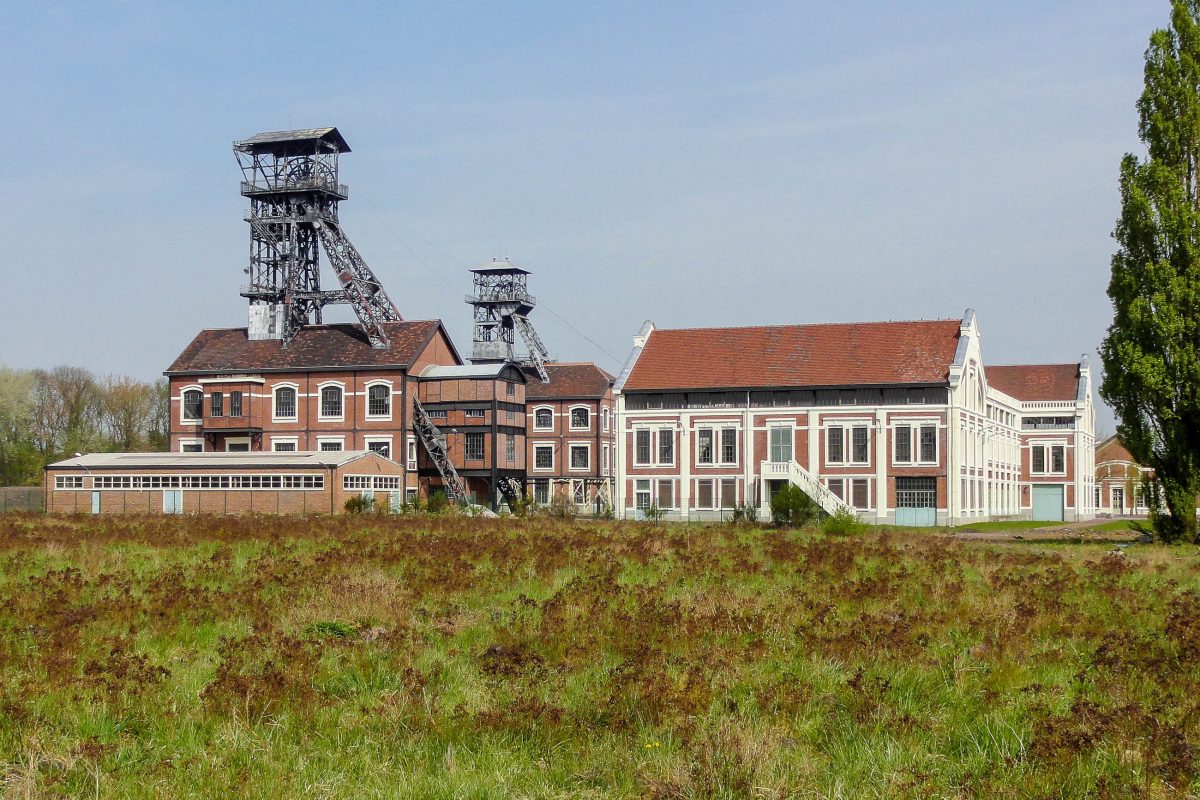
Die verlassenen Zechen und dunklen Kohlekegel sind noch immer stumme Zeugen einer einst florierenden Bergbau-Stadt. Die Überreste der Steinkohle-Förderung in den Regionen Nord und Pas de Calais zählen seit 2012 als Nordfranzösisches Kohlerevier zum Weltkulturerbe der UNESCO.
Auf einem Gebiet von rund 120.000 Hektar dokumentieren über 100 Bauten die Vergangenheit des einstigen Wirtschaftswunders, welches eine bedeutende Rolle in der Geschichte der europäischen Industrie spielte.
Neben den aufgelassenen Zechen zählen auch Gleisanlagen, Arbeitersiedlungen, Schulen, Krankenhäuser, Firmengebäude, ehemalige Wohnsitze der Unternehmer, Rathäuser, Sportstätten und Kirchen zum Nordfranzösischen Kohlerevier.
Rundgang zu den Sehenswürdigkeiten in Lens
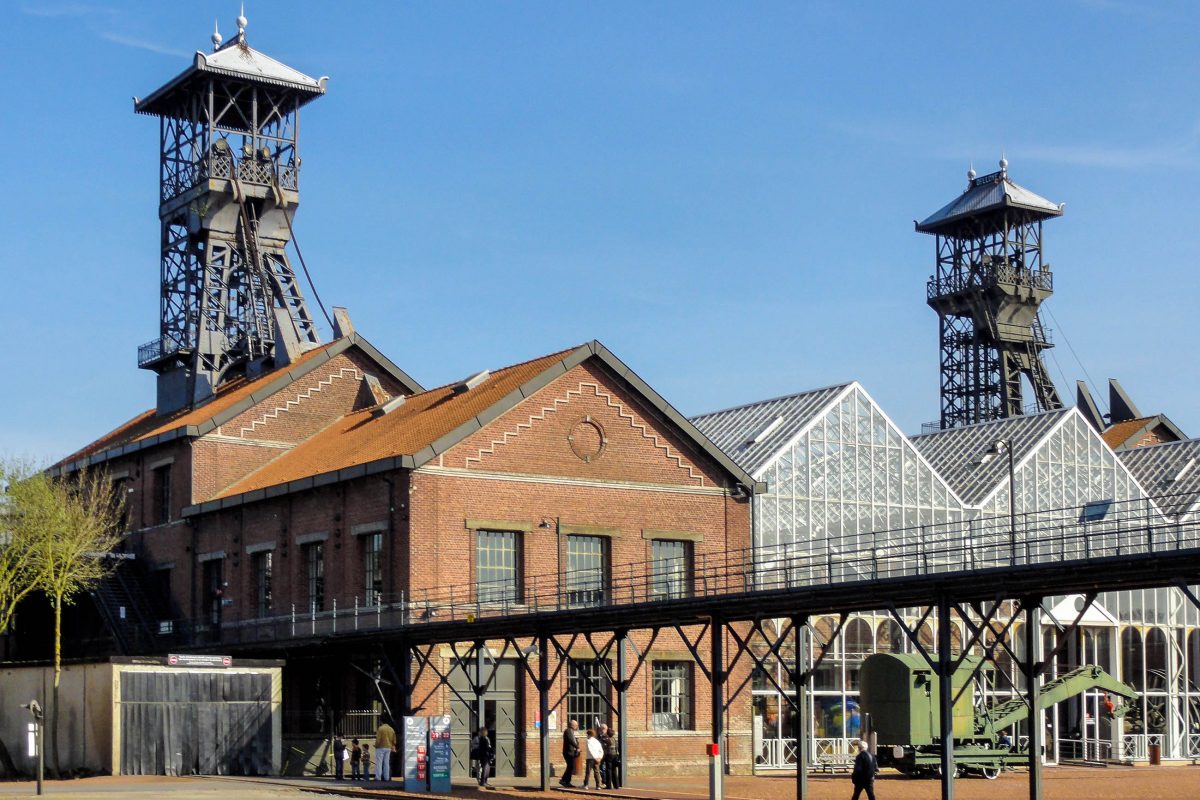
Lens besteht hauptsächlich aus roten Ziegelhäusern und Sozialbauten, deren bröckelnde Substanz ihr Alter verrät. Die wichtigsten Sehenswürdigkeiten von Lens liegen praktischerweise alle innerhalb einer guten Gehstunde und können mühelos an einem Tag besichtigt werden.
Als Ausgangspunkt bietet sich der Bahnhof im Zentrum von Lens an. Gleich daneben, am Beginn der Rue de la Gare, befindet sich übrigens das Touristen-Informationszentrum.
Gare de Lens (Bahnhof)

Der Bahnhof im Zentrum von Lens wurde von 1926 bis 1927 errichtet und ist der perfekte Ausgangspunkt für einen Rundgang durch die Stadt. Sowohl der französische Hochgeschwindigkeitszug TGV als auch der regionale Verkehrsanbieter Transport express régional (TER) bedienen den Gare de Lens.
Reisende, die mit dem Zug in Lens ankommen, sind außerdem nur 30 Gehminuten von den beiden meistbesuchten Attraktionen von Lens entfernt:
- Das Fußballstadion Stade Bollaert Delelis, welches einer der zehn Austragungsorte der Fußball Europameisterschaft 2016 war, liegt nicht einmal 2 Kilometer nordwestlich des Bahnhofs
- Das Kunstmuseum Louvre-Lens, das jährlich rund 400.000 Besucher in den Norden Frankreichs lockt, ist zu Fuß in einer halben Stunde zu erreichen
Bahnhof in Lok-Form
Das sprechende Design des Gare de Lens stammt vom französischen Architekt Urbain Cassan, der die Architektur des Bahnhofs in Form einer Dampflokomotive gestaltete. Einfachheit und niedrige Kosten waren damals die Leitmotive des Entwurfs.
Die verschieden hohen Bahnhofsgebäude repräsentieren den Maschinenraum, der von einem 23 Meter hohen Turm als Rauchfang abgeschlossen wird. 1984 wurde der Bahnhof zu einem „monument historique“, einem historischen Nationaldenkmal von Frankreich ernannt.
Église Saint-Léger
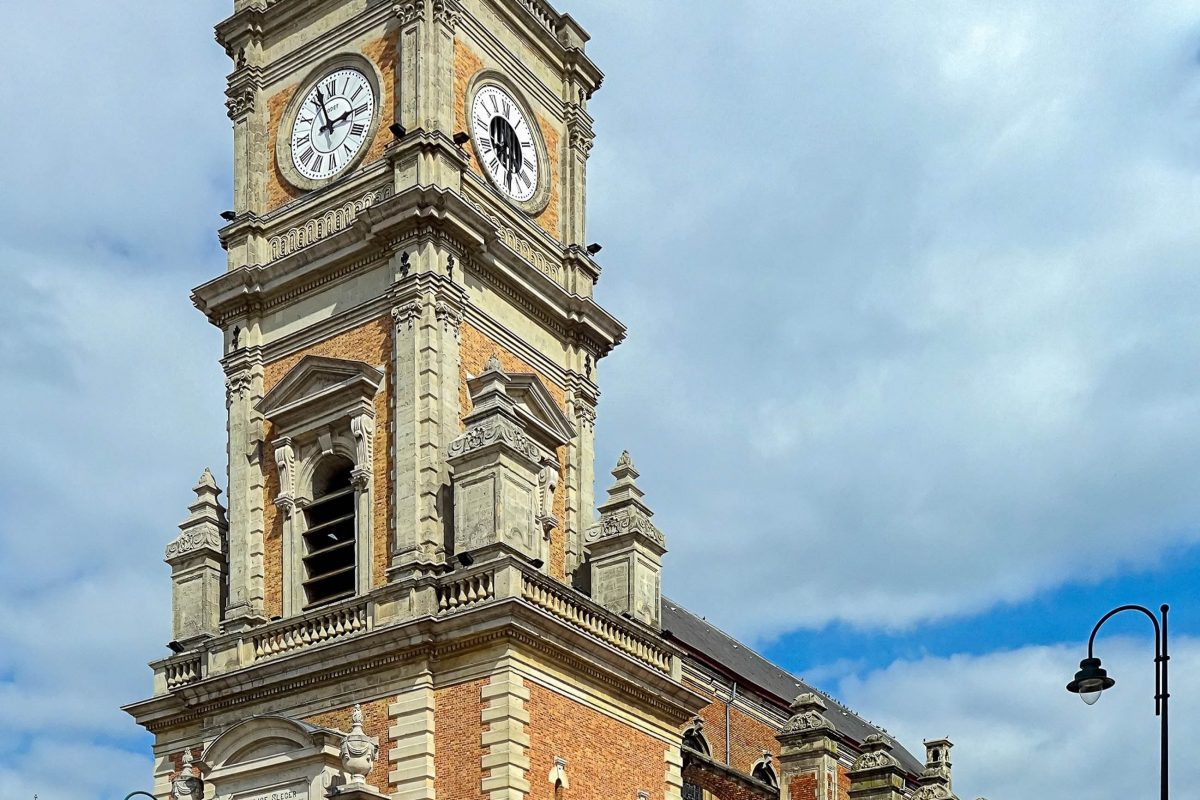
Über Rue Berthelot gelangt man zur wohl hübschesten Sehenswürdigkeit von Lens, der Église Saint-Léger. Bereits zweimal im Krieg zerstört stammt die heutige Kirche aus den 1920er-Jahren, ihr Design ist jedoch stark an das der früheren Entwürfe angelehnt.
Die Église Saint-Léger wird durch das Eingangsportal betreten, über dem der Glockenturm thront. Neben dem Hauptportal kann die dahinter liegende Vorhalle auch über zwei Seitenportale betreten werden. Das langgezogene, von Säulen und Spitzbogenfenstern gesäumte Hauptschiff vermittelt dem Gotteshaus etwas Erhabenes.
Tipp: Werfen Sie einen Blick in die Kapelle der Opfer des Ersten Weltkriegs. Dort wird eine Statue der Heiligen Muttergottes aus dem 17. Jahrhundert aufbewahrt, das einzige Überbleibsel der zerstörten Vorbauten.
Geschichte der Église Saint-Léger de Lens
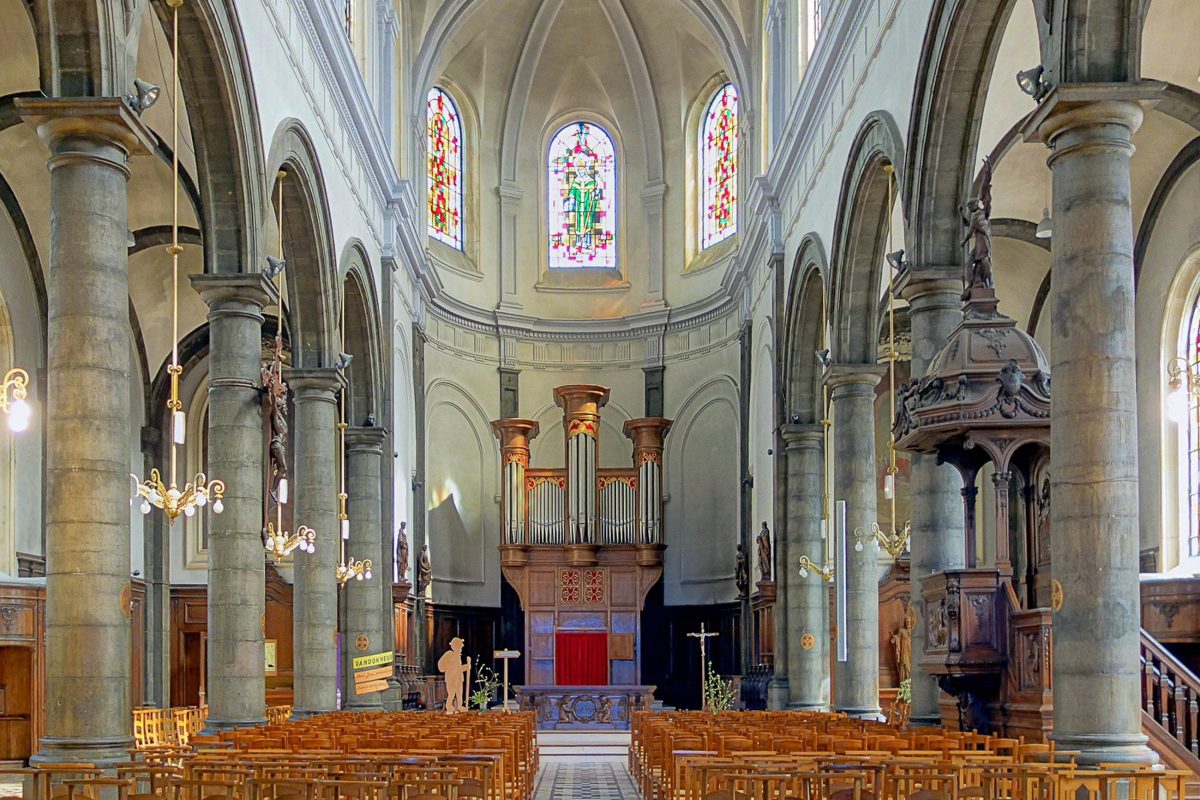
Das heutige Gotteshaus ist bereits das dritte, welches an dieser Stelle errichtet wurde. Historischen Aufzeichnungen zufolge wurde die erste Kirche bereits im 10. Jahrhundert errichtet, damals vermutlich unter Minister Eustachius. Im Dreißigjährigen Krieg musste die Kirche starke Schäden davontragen, die nur notdürftig repariert wurden.
Im Mai 1776 begann der Bau einer neuen Kirche, die jedoch bald nur noch als Pulver- und Vorratsspeicher fungierte und im Ersten Weltkrieg wiederum dem Erdboden gleichgemacht wurde.
Die heutige Kirche Saint-Léger besteht aus stabilem Stahlbeton. Der Bau wurde 1921 beschlossen, am 8. Juni 1924 erfolgte die Grundsteinlegung und knapp zwei Jahre später, am 24. Mai 1926 erfolgte die Weihe durch den Bischof von Arras.
Den Zweiten Weltkrieg überstand das Gotteshaus weitestgehend unbeschadet, sodass der Bau erst 1996 der nächsten umfassenden Renovierung unterzogen wurde.
Église Saint-Edouard
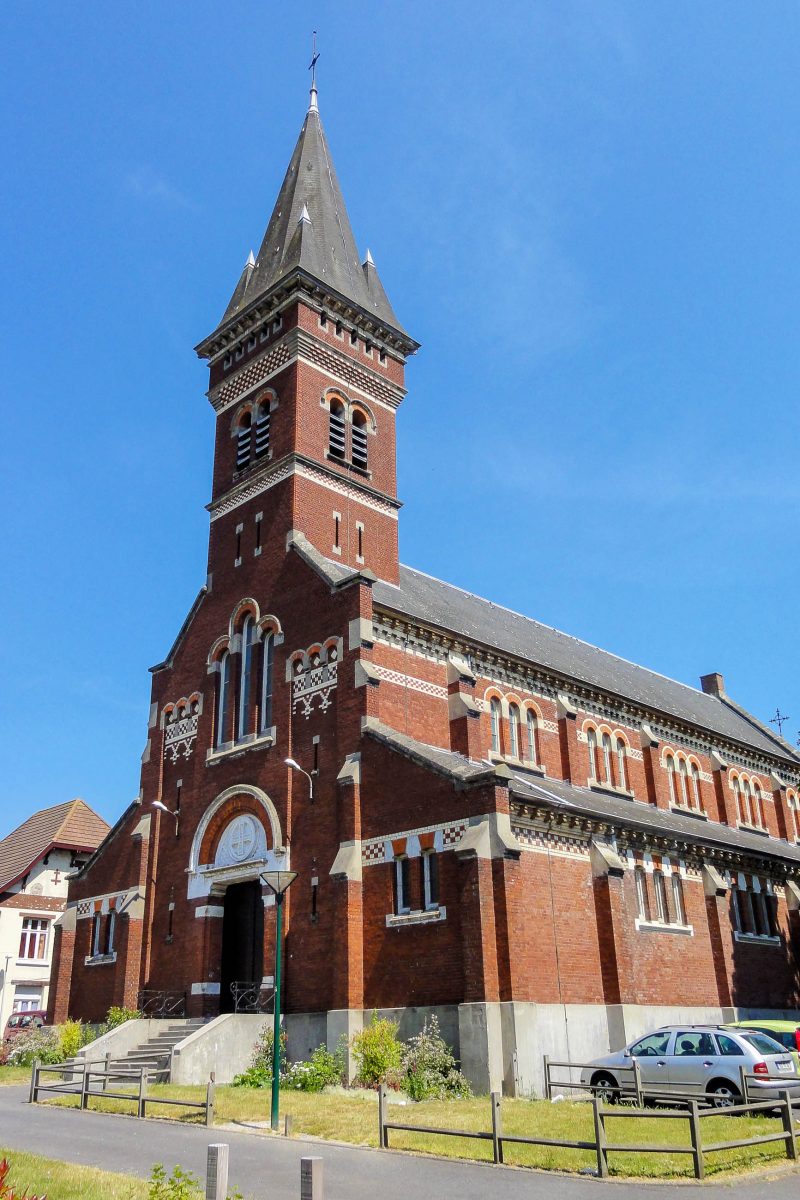
Die nächste Kirche auf dem Rundgang durch Lens liegt nordwestlich der Église Saint-Léger an der Avenue Saint-Edouard. Die hübsche rote Kirche mit dem spitzen Glockenturm stammt aus dem ersten Quartal des 20. Jahrhunderts und wurde 2009 ebenfalls zum „monument historique“ erklärt.
Als Teil des Nordfranzösischen Kohlereviers zählt sie seit 2012 außerdem zum Weltkulturerbe der UNESCO.
Auf dem Weg zur Église Saint-Edouard passiert man auch die Moschee von Lens und die Avenue de la fossé 12 mit ihren historischen Bergbau-Gebäuden.
Universität
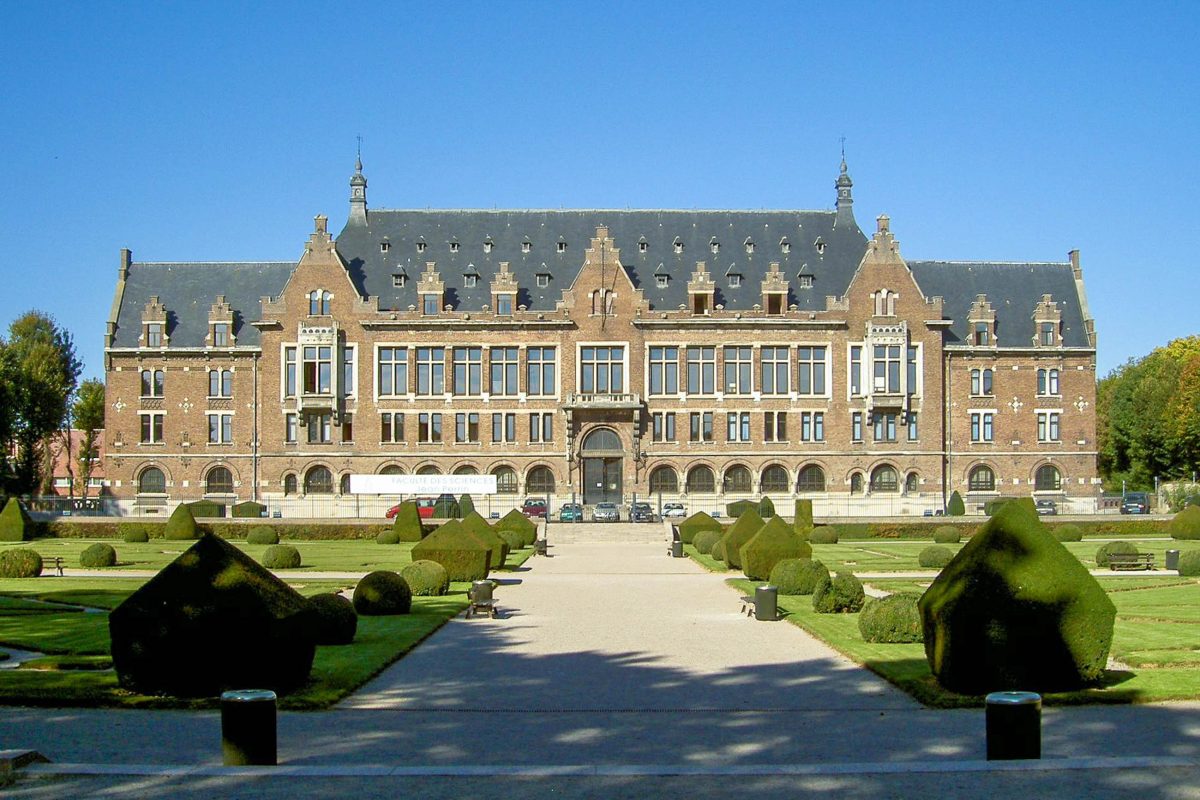
Von der Église Saint-Edouard auf der anderen Seite der Route de Béthune thront das Universitätsgebäude von Lens, das Geologie, Geographie und Naturwissenschaften lehrt. Es gehört zur Universität Artois, die als eine der jüngsten Universitäten Frankreichs erst 1992 gegründet wurde.
Neben Arras als Hauptsitz und Lens ist die Universität Artois auch noch in den nordfranzösischen Städten Béthune, Douai und Liévin zu finden, die alle spezifische Fachbereiche abdecken.
Kunstmuseum Louvre-Lens
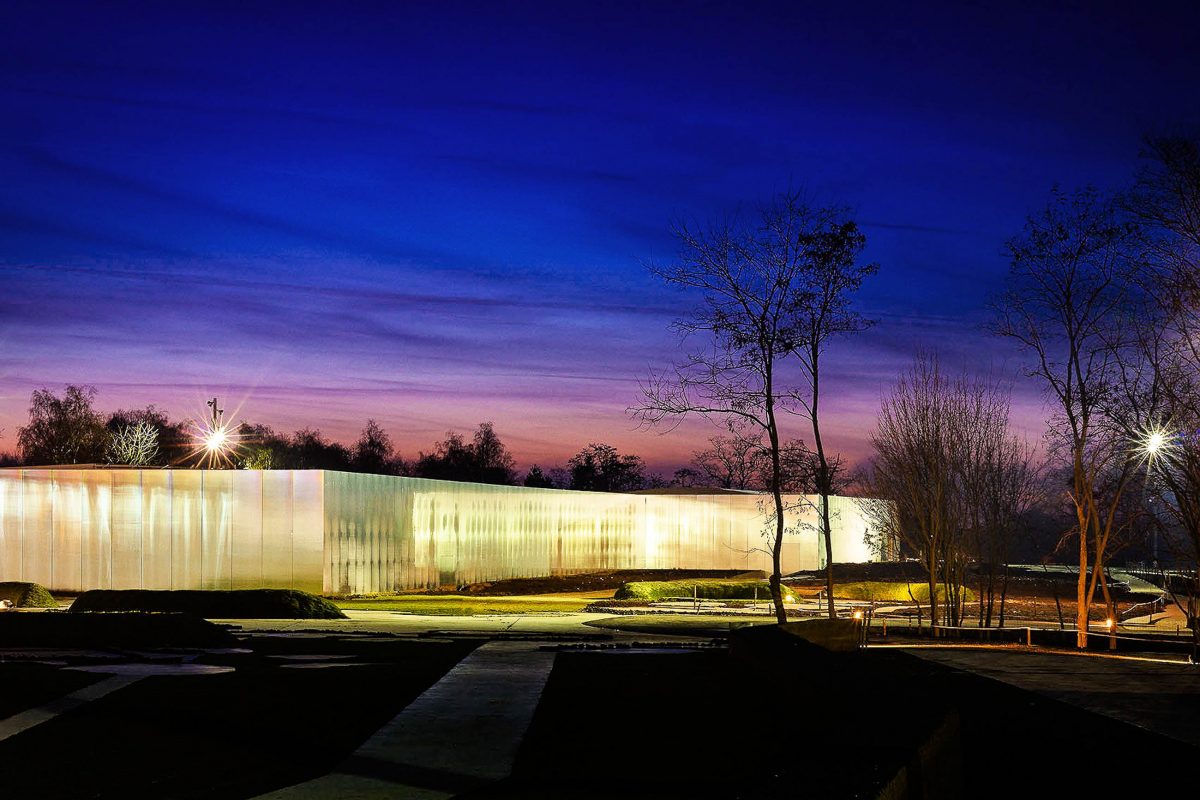
Über die Avenue des Lilas geht es wieder Richtung Süden zur Église Saint-Théodore. Daneben führt die Rue de la Rochefoucauld zum Kunstmuseum Louvre-Lens, der berühmtesten und meistbesuchten Sehenswürdigkeit von Lens.
Das Louvre-Lens ist eine Zweigstelle des weltbekannten Kunstmuseums in Paris, zeigt sich jedoch mit jüngster Technik und aufgeschlossenem Zugang moderner, spritziger und lockerer als sein konservativ geprägtes – und teureres – Pendant in der französischen Hauptstadt.
Das lichtdurchflutete Museum zeigt in wechselnden Ausstellungen Exponate aus dem Pariser Louvre, ist jedoch wesentlich preisgünstiger und weniger überlaufen.
Besuch des Louvre-Lens
Wie in der Kohle-Stadt Lens kaum anders möglich wurde im Gebäude des Louvre-Lens früher Steinkohle gefördert. Die so genannte „Zeche Nr. 9“ liegt rund 2km westlich der Innenstadt von Lens und war von 1886 bis 1980 in Betrieb.
Der Eintritt in das Louvre-Lens erfolgt durch eine 68 mal 55m messende Eingangshalle, die sich im Zentrum von 5 Bauten befindet. Links davon sind die Sonderausstellungen und ein Hörsaal mit 300 Sitzplätzen untergebracht, rechts geht es zum 130m langen Hauptausstellungsgebäude mit der „Galerie der Zeit“ und dem Komplex für Dauerausstellungen.
Das Kunstmuseum beherbergt rund 200 Exponate, die aus den verschiedensten Abteilungen des Louvre in Paris und von anderen Museen aus der Umgebung stammen. Die Bandbreite der Ausstellungsstücke reicht vom 3. Jahrtausend vor Christus bis zum Jahr 1850.
Die Werke im Louvre-Lens sind nicht wie in den meisten Museen nach Regionen getrennt, sondern können aufgrund der einmaligen baulichen Gegebenheiten je nach Epoche bestaunt werden. Griechische Skulpturen aus der Antike treten somit in direkten Dialog mit der Kunst aus dem ägyptischen Pharaonenreich.
Das Besondere am Louvre Lens ist, dass es auch einen Blick hinter die Kulissen eines Kunstmuseums ermöglicht. Besucher können die Archive und Handwerksbereiche im Museum erkunden, die Restaurierung eines Werks verfolgen und Details über den Betrieb eines Museums erfahren.
Das neue Louvre – warum in Lens?
2003 entstand die Idee, eine Zweigstelle des Pariser Louvre einzurichten. Der Präsident der Nord-Pas de Calais Region, Daniel Percheron, zeigte sich an diesem Projekt sofort interessiert und konnte seine Stadt unter 5 weiteren Alternativen behaupten.
Die gute Verkehrsanbindung über die Autobahn und den TGV, die zentrale Lage von Lens zwischen Lille und Arras und das großzügige Grundstück, das zur Verfügung stand, sowie 8.000 Unterschriften der lokalen Bevölkerung trugen wesentlich zu dieser Entscheidung bei. 2005 wurde ein Architektur-Wettbewerb für die Errichtung des Museums in Lens ausgeschrieben.
Das Ensemble aus fünf Museumsbauten wurde vom Architekturbüro SANAA entworfen. Aus 120 Architekten aus der ganzen Welt gewann den Wettbewerb das japanische Architektenteam Kazuyo Sejima und Uyüe Nishizawa. Der Landschaftsgarten, in den die Museumsbauten eingebettet sind, wurde nach Plänen von Catherine Mosbach angelegt.
Kulturminister Frédéric Mitterrand legte am 4. Dezember 2009 den Grundstein für das Louvre-Lens. Die Kosten für den Umbau und die Einrichtung des Museums auf dem etwa 20 Hektar großen Gelände beliefen sich auf rund 150 Millionen Euro.
Die Eröffnung des Louvre-Lens erfolgte exakt drei Jahre nach der Grundsteinlegung, am 4. Dezember 2012. François Hollande, der damalige französische Präsident, durchschnitt feierlich das Band. 8 Tage später empfing das Kunstmuseum die ersten Besucher.
Im ersten Jahr war der Eintritt noch kostenlos, was gleich von 330.000 Kunstinteressierten genutzt wurde. Insofern ging die Rechnung auf, ähnlich wie dem Guggenheim-Museum im spanischen Bilbao die Wirtschaft der touristisch kaum nennenswerten Kohlestadt etwas anzukurbeln.
Stade Bollaert Delelis
Über die Allée Marc-Vivien Foe, die von der Rue Paul Bert in Richtung Norden abzweigt führt der Weg zum Stade Bollaert Delelis. Nach der Fußball EM 1984 und der WM 1998 diente das Stadion in Lens auch bei der EM 2016 als Austragungsort.
Das Stadion wurde 1933 eröffnet und für die Fußball EM 2016 bis Ende 2015 um 78 Millionen Euro modernisiert. In seiner neuesten Form hat die 41.000 Zuschauer fassende Arena mehr Sitzplätze als Lens Einwohner und zählt zu unseren 10 wichtigsten Fußballstadien Frankreichs.
Weiterführende Links:
Offizielle Website des Bahnhofs von Lens mit Abfahrts- und Ankunftszeiten
Offizielle Website des Louvre Lens

